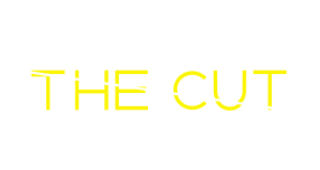Nutrition Protocols
One of the reasons we conduct an initial consultation at The Cut is to establish what we feel would be the best nutrition protocol to adopt. There isn’t a “right” or “wrong” way of doing things, but there is definitely an optimal way for you, and we need to establish what that is.
We use a variety of nutrition protocols which I will go on to detail in this post. We may also change strategies as a client progresses through a programme depending on progress, feedback, compliancy etc.
Should I use a food plan?
We may recommend a food plan to a client if they have a short time frame to achieve their goal. Long term, food plans wouldn’t be our chosen nutrition protocol as we feel a more flexible approach would give a more sustainable result, particularly as most of our clients work life involve socialising/client entertaining.
If a client is new to training and sports nutrition then this could be a good way to get things going as it takes all of the thinking out of what to eat, as we have found if we overload clients with too much information in the beginning it can be quite overwhelming and off putting.
If a client is compliant and follows the food plan meticulously we can easily suggest changes in accordance to progress without too much guess work needed (some strategies will require an educated guess).
Once a client has followed a plan we would expect habits to have been created and we can then look at moving into more of an educating and coaching set up where there is more freedom of choice as food plans will inevitably get boring. A meal plan is restrictive and it can make eating out and socialising difficult but if followed religiously you will get a result.
When we may recommend:-
-New trainees
-Individuals seeking a time restricted result
-People who want as close to a guaranteed result as possible who are willing to make social sacrifices
When we probably wouldn’t recommend:-
-Long term clients
-Individuals short on time to cook
-Individuals who’s profession involve client entertaining
Should I use Calorie targets and Macro split tracking?
Giving clients a calorie target to achieve is a good way to add flexibility and variety to a plan. We would take into consideration a couple of things when setting a calorie target such as activity levels, time frame to achieve goal and start point as they would all impact our recommendation.
We generally would have a client track their calories on The app “MyFitnessPal” as it has the largest food database and it is user friendly.
Within the calorie target we would also recommend nutrient dense whole foods, as we put a strong emphasis on health at the CUT and not just aesthetics.
There are always going to be conflicting studies and opinions on what is the optimal ratio of macros (amount of carbs/fats/protein) but the one thing that cannot be disputed is that for an individual to lose body fat they must be in a calorie deficit. It is our job to manage the deficit. By this I mean we need to establish how much of a deficit is enough for the client to achieve their desired progress but without starving them to a point they fall off the wagon and binge.
We feel we need to treat each client individually and we make recommendations based on their needs, preferences and any digestion issues not just a formula or calculation.
When we may recommend:-
-To clients who have a good base knowledge of nutrition and are willing to document and feedback to us regularly
– Clients who need flexibility
-To clients who may need to factor in social eating or not having complete control of what they eat
When we probably wouldn’t recommend:-
-If clients can’t consistently track
How can I portion control without weighing food?
Learning portion control will be a clients greatest long term asset. However, sometimes it may take one of the previously mentioned protocols to learn. It is convenient and allows flexibility and won’t require tracking food or weighing ingredients.
If a client starts with us and their diet is made up of a lot of processed, high calorie low nutrient dense foods then just implementing some basic changes will give us a good return and just moving towards whole foods should automatically put them into a calorie deficit.
We have clients learn portion control by using a protocol taught by precision nutrition where portions of macro nutrients are based on your hand size
Protein source- Size of your palm
Fat source- Size of your thumbs
Carb source- Size of cupped hand
Veg- Size of your fist
https://www.precisionnutrition.com/calorie-control-guide
When we may recommend:-
-When a client has a long term goal
-When a client is limited for time to cook and eats out a lot
-When a client is looking to maintain and not necessarily improve their physique
When we may not recommend:-
-When clients want a quick result
-If we feel there is misunderstanding of portion sizes and results are not being achieved
With all nutrition protocols we are trying to establish a calorie deficit if the goal is fat loss. But our job is to identify the best way for our client achieve this.
Getting to grips with nutrition is where success lies for almost anybody on a fat loss or transformation journey.
